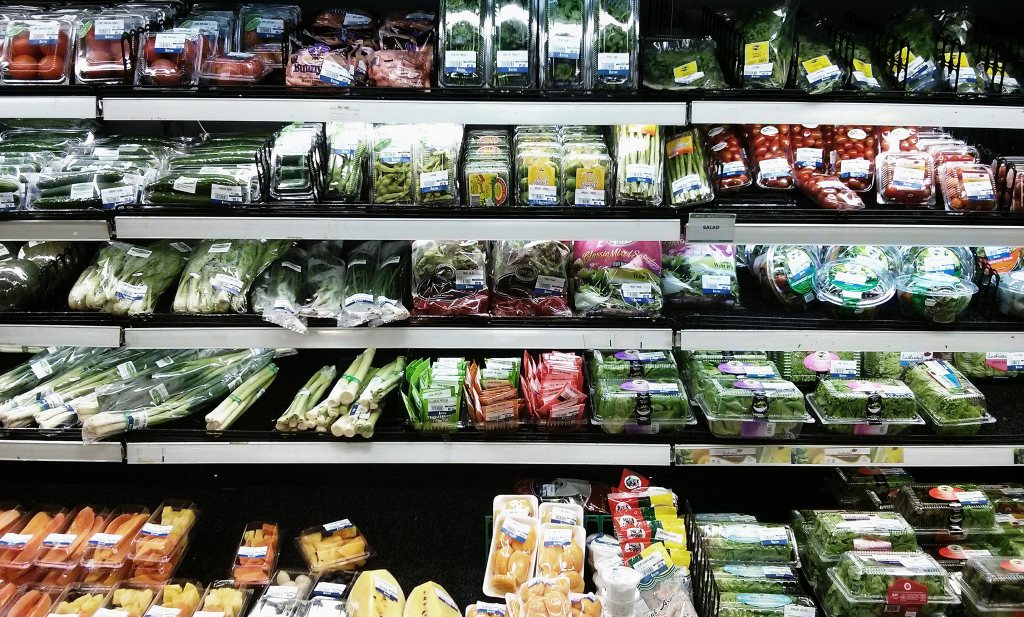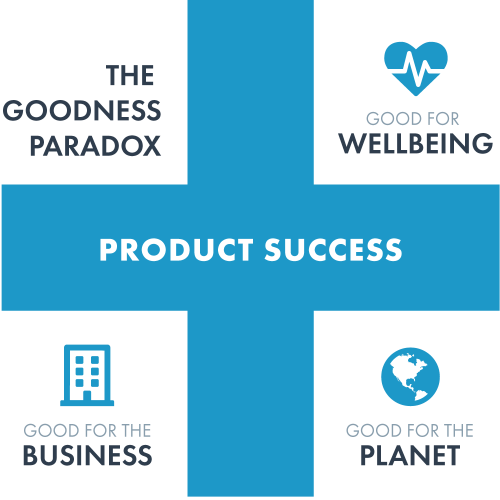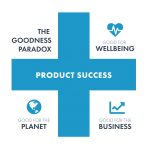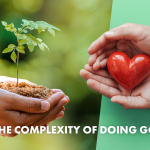
Reducing food waste is a popular way for manufacturers to become more sustainable. One way to achieve that goal is by using packaging for products, which extends their shelf lives.
Unfortunately, making more use of plastic can hardly be called ‘sustainable’.
This is just one example of the sustainability conflicts that can arise around a single product – labelled the ‘Goodness Paradox’ by SyncForce CEO Hans de Gier, during the Digital Food webinar earlier this year.
Foodlog has now further elaborated on this theory in an editorial piece Goodness Paradox: sustainability is a matter of data and daring to choose.
‘SyncForce develops applications in which companies can integrate the data of their products throughout the entire chain and increase transparency. With the push of a button, customers can calculate how they score on sustainability. This application will soon turn out to be theoretical, because the scores will get stuck. That’s a reason for De Gier to sound alarm,’ wrote Editor-in-chief Dick Veerman.
Reality check 1: the availability of (comparable) data
Despite all their good intentions, most companies find that they lack the necessary data to make sustainability calculations. Data also needs to be meaningfully linked. Without comparable denominators, data does not offer any meaningful insight.
For example, the sustainability labels of chicken are based on a hodgepodge of CO2 emissions. Different methods are used to calculate emissions from the maize, from the fertilizer needed to grow the maize, and from the barn in which the chickens live.
Veerman: ‘A universal taxonomy is needed. In plain language: every concept must be used in exactly the same way throughout the chain. And that has to be done at the most basic level. We need a periodic table for sustainable elements, as it were.’
Reality check 2: kill your sustainability darlings
But there is more. Companies can rarely achieve several sustainability goals at the same time. Taking sustainability seriously unfortunately often means making choices. Or, to put it brutally, killing your sustainability darlings.
Adding sugar or salt (or both) is a widely used method of preserving food. While this (like plastic) certainly helps to reduce food waste and increase food safety, it is not good from a health perspective. One way of doing good often clashes with another; either for wellbeing, the planet, or business.

Read more: What is the goodness paradox?
How to solve the Goodness Paradox
How can we solve this Goodness Paradox? A necessary, but complicated first step, is to make data from different sources comparable by creating a shared information model. Anyone who wants to demonstrate that they are ‘doing good’ needs to have a taxonomy to clarify what that means. This system needs to work for all industries, throughout the entire value chain and in all geographic regions.
After all, we eat ice cream with palm fat from Indonesia and eat eggs from chickens fed with Brazilian soy.
The challenge is not to create a single worldwide standard but to arrive at a collective of organizations that use and set standards and for those who provide the technology to enable the interoperability of these data.
Or, as Veerman writes in his article:
‘That collective can succeed if it stays out of the game itself and only pays attention to interoperability. That is why De Gier advises:
- Keep it agnostic, far from any platform, organization, data standard, or implementation;
- Avoid concentrations of power, such as a ‘not-for-profit’ organization that owns the exploitation rights;
- Let it apply globally; and
- Accept and expect a variety of standards (because they all have their own interests, you should even encourage them not to be ashamed of them).’
Read more: Managing the Goodness Paradox
Watch the webinar Digital Food: The Goodness Paradox


